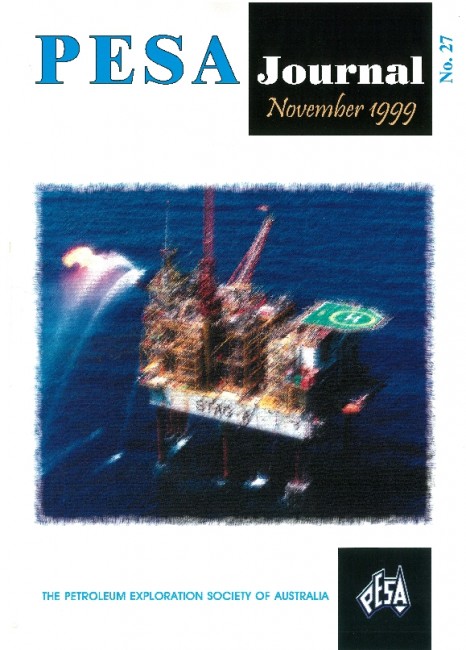Publication Name: PESA Journal No.27
Authors: John D. Gorter
Publication Volume: 7
Date Published: November 1999
Number of Pages: 17
Reference Type: Journal Article
Abstract:
In the Fohn-1 exploration well in the offshore northernBonaparte Basin, a 350 m thick breccia lens is interpreted as
a buried, complex, impact crater formed in the late Eocene
erosion smface. This interpretation is supported by seismic
sections, petrology, and trace element geochemistry of the
breccia lens, which contains anomalous platinum group
element (PGE) values, including iridium. The undrilled
Fohn South structure, another possible complex impact
feature to the south of and contemporaneous, with the Fohn
impact, has a raised outer rim, an annular syncline, and a
central, faulted uplift. Closely-spaced 2D seismic profiling shows around 30 other smaller circular depressions at the same stratigraphic
horizon on which the Fohn and Fohn South structures are
developed. These smaller structures come in two distinct
but transitional styles: a. Simple circular features up to 1
km across, with a well-bedded sedimentary fill and clearly
defined seismic velocity push-down, and b. circular features
with a chaotic fill, often with positive relief in relation to the
base Miocene surface, and with seismic velocity pull-up of
underlying events. The first group is interpreted as simple
impact craters, as several of these circular structures have
raised annular rims and relatively flat floors. Some of these
simple craters show ejecta downlapping onto the erosion
surface. The origin of the second group is less easy to ascribe to a
meteoritic impact origin. However, the circular outline,
close proximity and occurrence at the same stratigraphic
horizon to the other circular features, suggest a similar
genesis. Also, the chaotic 'fill', onlap over this fill and the
seismic velocity pull-up associated with these features
suggest a denser, more resistant rock type.
The Mistral structure, to the west of Fohn and near the
Bayu-Undan gas field, is believed to be the remnant of an
impact structure and exhibits its almost complete erosion of
the superficial impact generated features, except for the
eroded cental uplift and two collapse dolines tentatively
located within the annular syncline. The Mistral-1 area has
an anomalous seismic velocity which does not fit into the
regional velocity field derived from other wells in the area;
it is suggested that this anomalous velocity is the result of
impact.
A possible adverse consequence of the Fohn structure
impact is the destruction of porosity in more deeply buried
Jurassic reservoirs. Consequently, undue reliance on
reservoir quality in Fohn-1 may bias porosity predictions in
the region.


